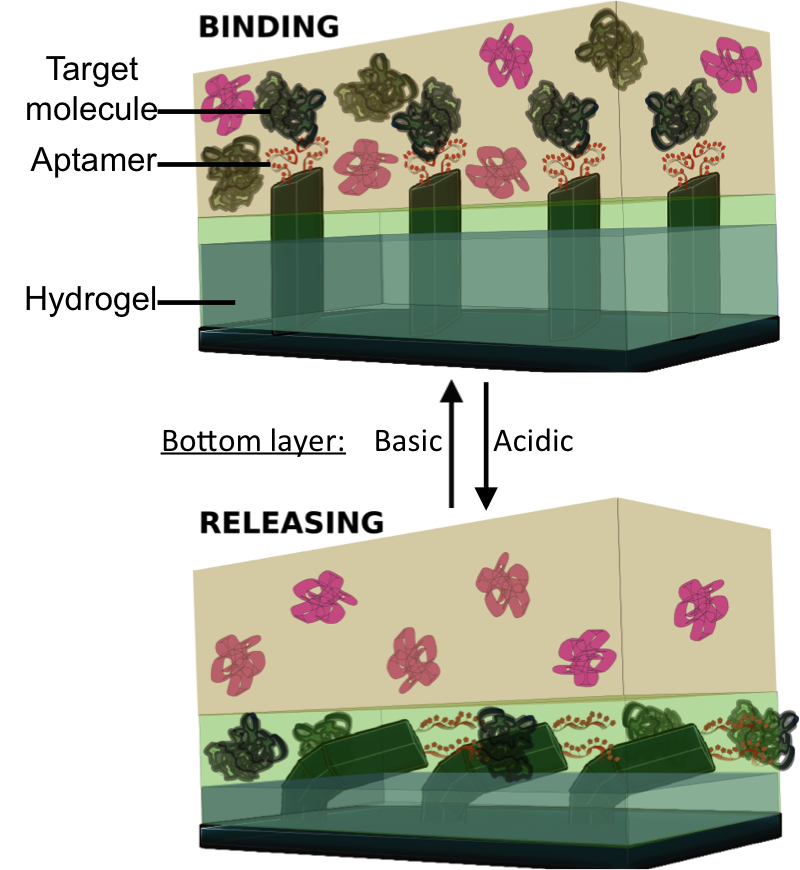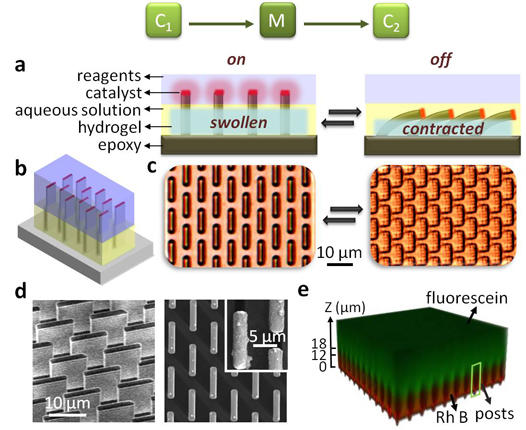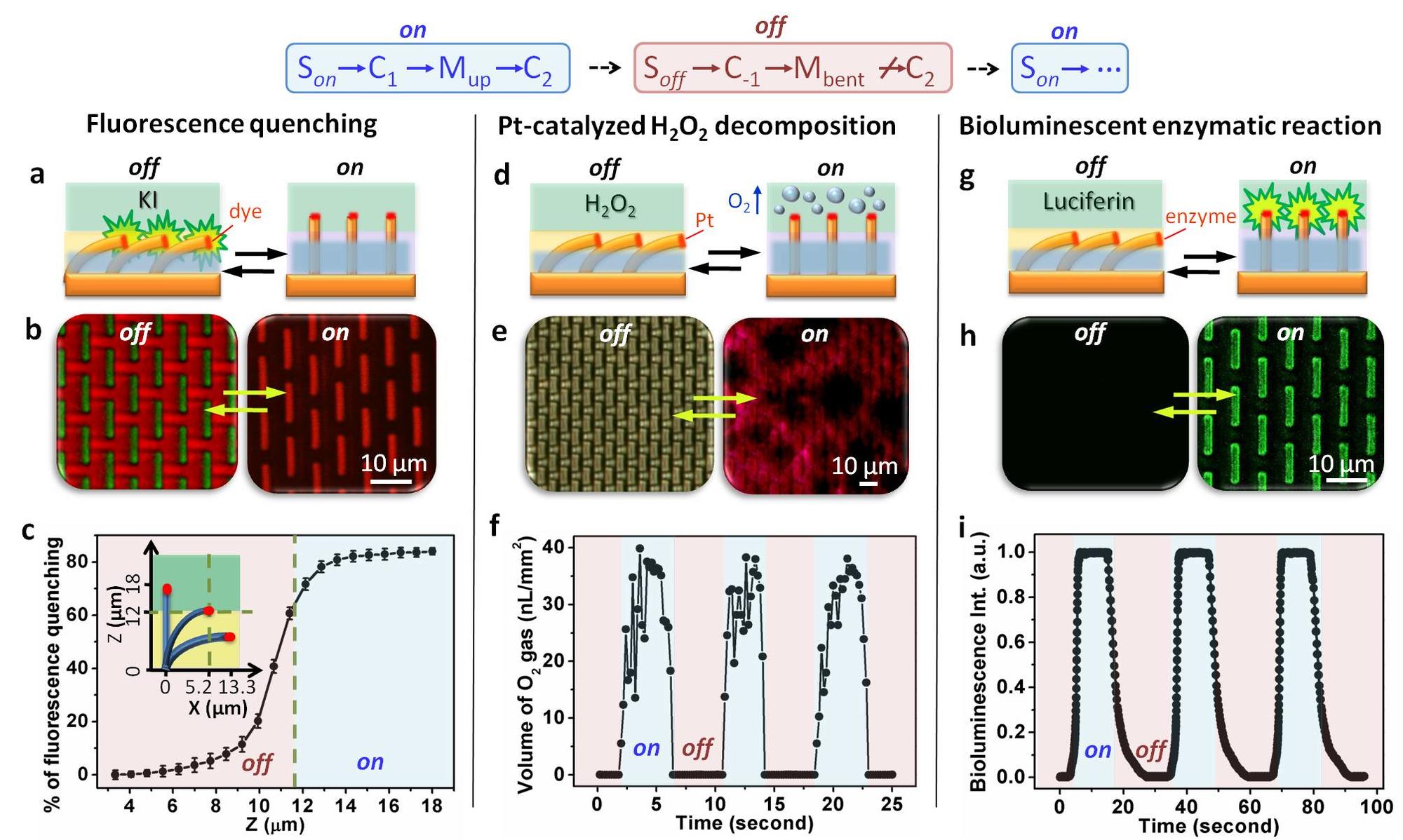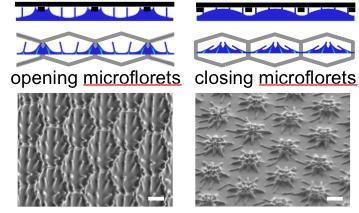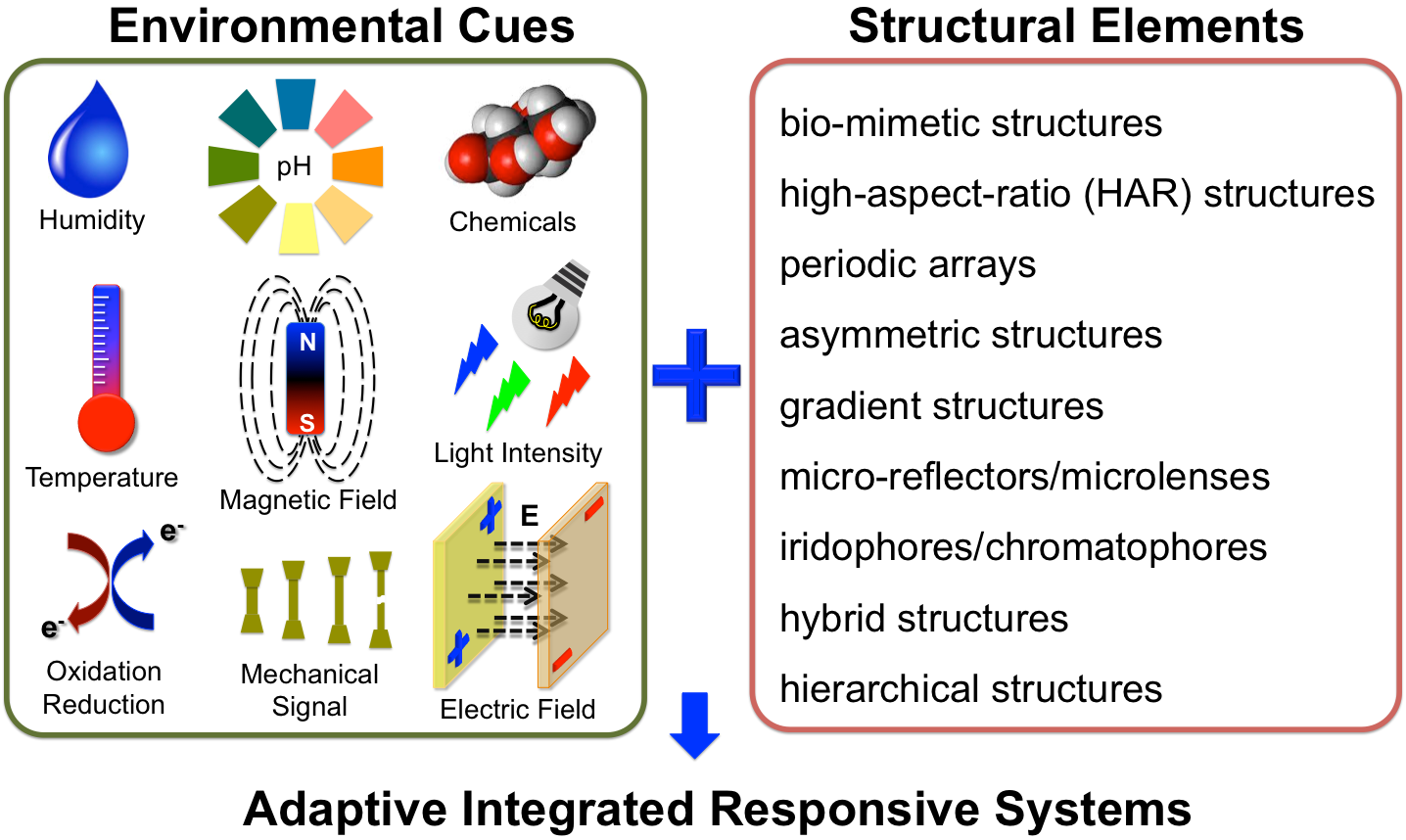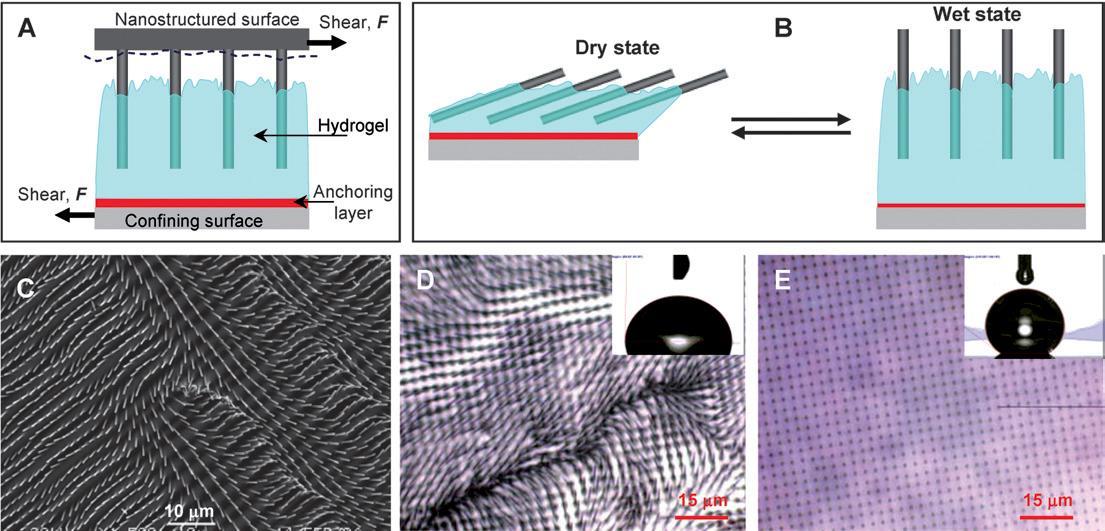Based on this concept, we have developed a class of adaptive materials that, similar to skeletomuscular systems, use a hybrid architecture to interconvert energy between different forms and scales. To specify the materials’ functions, we use surfaces bearing arrays of nanostructures.
Their unique topography can be designed to confer a wide range of optical, wetting, adhesive, anti-bacterial, motion-generating, and other behaviors, similar to their natural counterparts used by lotus leaves to shed water, geckos to stick to surfaces, echinoderms to keep their skin clean, and fish to sense flow. An additional beauty of these nanostructured surfaces is that any of these properties can be switched or fine-tuned just by bending or tilting the structures to alter the patterns.
To harvest and channel energy to drive such reconfigurations, we embed the nanostructures in hydrogels that can be chemically tailored to sense a wide selection of chemical, mechanical, humidity, temperature, light, biochemical, and other environmental conditions.
Changes in these conditions cause the gel to swell or contract, generating not only the mechanical energy of bulk size change but an entire multiscale, 3D cooperative network of mechanical forces within the gel that provide the work for reconfiguring the nanostructures.
Using both experimental and modeling approaches as well as new fabrication methods, we are developing our ability to take full advantage of the immense potential for energy coupling within these hybrids to create a generation of sustainable, self-reporting, self-adapting materials.
